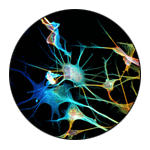
According to the American Cancer Society in 2019, there was an estimated 1,762,450 new cancer cases diagnosed and 606,880 cancer deaths in the United States alone. Microtuble targeting agents (MTA) may be a great medical weapon to combat cancer because they hinder intracellular transport, prevent eukaryotic cell proliferation, and promote cell death by suppressing microtubule dynamics.
However, sensitivity to MTA varies among cancers and predicting the response of individual cancer patients remains challenging. As microtubules possess vast molecular heterogeneity generated by tubulin isotypes and their post-translational modifications, collectively known as the “tubulin code”, does this diversity impact MTA sensitivity?
Join Lenka Munoz of the Faculty of Medicine and Health at the University of Sydney as she provides novel insights into the relationship between the tubulin code and MTA efficacy as well as discusses the role of cancer cell dormancy in the sensitivity of cancer cells to MTA.
What You Will Learn
- A background to the tubulin code and its impacts on the efficacy of microtubule-targeting agents
- The importance of using orthogonal inhibitors and per-division growth rate inhibition assays in cancer drug discovery
- How to detect and target dormant cancer cells
Additional Resources
- Lower Tubulin Expression in Glioblastoma Stem Cells Attenuates Efficacy of Microtubule-Targeting Agents – ACS Pharmacology & Translational Science










